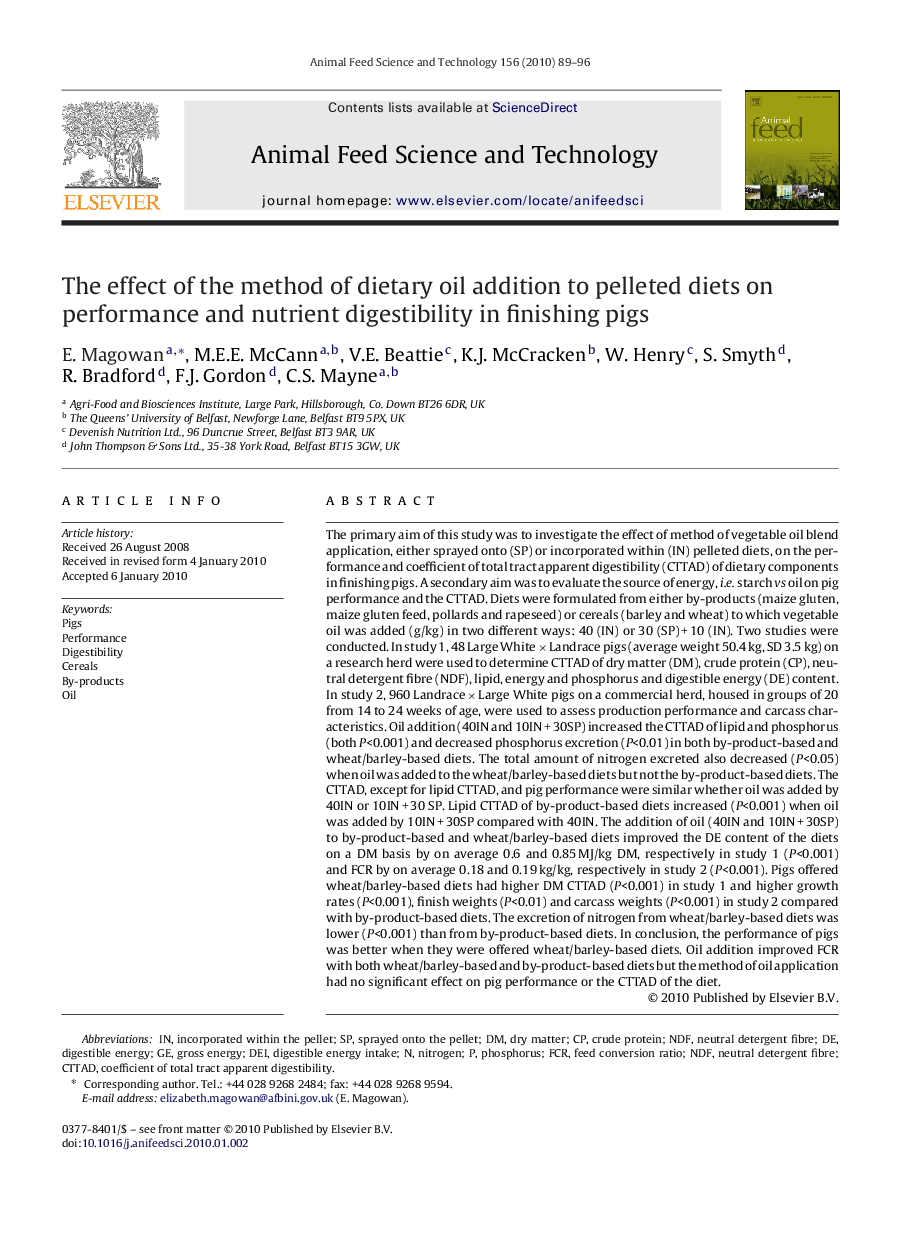| Article ID | Journal | Published Year | Pages | File Type |
|---|---|---|---|---|
| 2420136 | Animal Feed Science and Technology | 2010 | 8 Pages |
The primary aim of this study was to investigate the effect of method of vegetable oil blend application, either sprayed onto (SP) or incorporated within (IN) pelleted diets, on the performance and coefficient of total tract apparent digestibility (CTTAD) of dietary components in finishing pigs. A secondary aim was to evaluate the source of energy, i.e. starch vs oil on pig performance and the CTTAD. Diets were formulated from either by-products (maize gluten, maize gluten feed, pollards and rapeseed) or cereals (barley and wheat) to which vegetable oil was added (g/kg) in two different ways: 40 (IN) or 30 (SP) + 10 (IN). Two studies were conducted. In study 1, 48 Large White × Landrace pigs (average weight 50.4 kg, SD 3.5 kg) on a research herd were used to determine CTTAD of dry matter (DM), crude protein (CP), neutral detergent fibre (NDF), lipid, energy and phosphorus and digestible energy (DE) content. In study 2, 960 Landrace × Large White pigs on a commercial herd, housed in groups of 20 from 14 to 24 weeks of age, were used to assess production performance and carcass characteristics. Oil addition (40IN and 10IN + 30SP) increased the CTTAD of lipid and phosphorus (both P<0.001) and decreased phosphorus excretion (P<0.01) in both by-product-based and wheat/barley-based diets. The total amount of nitrogen excreted also decreased (P<0.05) when oil was added to the wheat/barley-based diets but not the by-product-based diets. The CTTAD, except for lipid CTTAD, and pig performance were similar whether oil was added by 40IN or 10IN + 30 SP. Lipid CTTAD of by-product-based diets increased (P<0.001) when oil was added by 10IN + 30SP compared with 40IN. The addition of oil (40IN and 10IN + 30SP) to by-product-based and wheat/barley-based diets improved the DE content of the diets on a DM basis by on average 0.6 and 0.85 MJ/kg DM, respectively in study 1 (P<0.001) and FCR by on average 0.18 and 0.19 kg/kg, respectively in study 2 (P<0.001). Pigs offered wheat/barley-based diets had higher DM CTTAD (P<0.001) in study 1 and higher growth rates (P<0.001), finish weights (P<0.01) and carcass weights (P<0.001) in study 2 compared with by-product-based diets. The excretion of nitrogen from wheat/barley-based diets was lower (P<0.001) than from by-product-based diets. In conclusion, the performance of pigs was better when they were offered wheat/barley-based diets. Oil addition improved FCR with both wheat/barley-based and by-product-based diets but the method of oil application had no significant effect on pig performance or the CTTAD of the diet.
